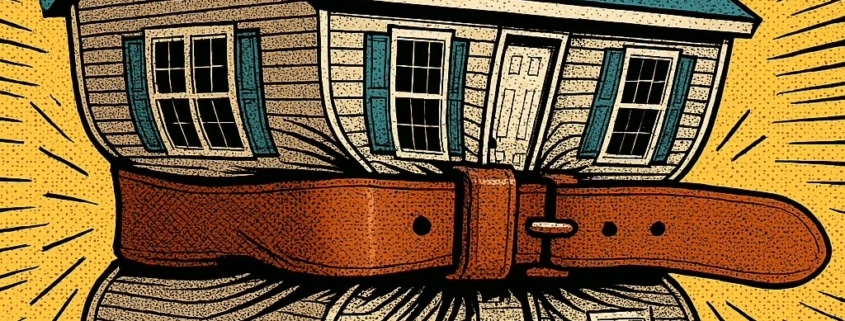Squeeze Play on Housing Providers
Even Oregon must sometime raise rents more than 6%. What chance do private housing providers have?
They are the big guys in housing. In fact, in Oregon, they are the biggest of all, operating hundreds of multi-family apartments, almost exclusively for low-income renters. And, as recently as 2023, they authorized rent increases averaging 8.6% on 45 of the properties in their portfolio. No wonder tenant advocates are demanding the Legislature take action and mandate housing providers slash maximum rent increases to no more than 6%, regardless of market conditions or expenses.
Except the “big guy” in this case isn’t some Wall Street equity firm or corporate behemoth. No, the “big guy” is the State of Oregon, whose Oregon Housing and Community Services (OHCS) agency maintains operational control over thousands of low-income housing units in its portfolio. Under state and federal laws, requests for rent increases of more than 5% in these properties must be authorized by the state if necessary to meet developer, operational, and maintenance expenses and to pay back state bond obligations.
OHCS has done a remarkable job in providing housing opportunities to low-income Oregonians. In doing so, however, even the state realizes that price controls without regard to financial stability in its own portfolio are untenable. And these projects already have significant public dollars invested in them.

Rent Control (Ironically) Puts the Squeeze on Low-Income Oregonians
That realization seems lost in HB 3054, which in its latest iteration, seeks to place tighter price controls on communities of manufactured homes by reducing the maximum rent increase to 6% per year. Unlike the mostly newer units in the OHCS portfolio, these parks are decades old and in constant need of expensive maintenance and repair. Unlike OHCS properties, these property owners are not subsidized by the government. Why the double standard?
Regular efforts to ratchet up price control in Oregon have led to the destabilization of rent stabilization. Some owners have indeed raised rates to the current 10% cap — ironically, in many cases, increases greater than they would have done without price controls — out of fear that the Legislature would continue to move the goalposts and leave them unable to cover future expenses. That fear has shown itself to be justified. Rent control has actually raised rents.
These parks remain one of Oregon’s most affordable housing values, and without government dollars. While exact numbers are unknown, the statewide average rent rates in manufactured home parks are likely below $900 per month. In contrast, according to RentCafe, the average apartment rent in Portland is $1,729, and $1,809 in Eugene.
A couple of new wrinkles in HB 3054 have been tossed into the mix. Proposed amendments would allow owners to increase rent by 12% once every five years if the majority of renters vote to approve the increase. Instead of a concession, it’s more like a poisoned pill. What renter is going to vote to double their rent increase? It would be like having grocery shoppers vote on how much the store must sell them bananas.
The other provision would exempt manufactured parks with fewer than 30 units from the new constraints. It’s an opaque attempt to get at “corporate owners” without regard to the fact that many larger parks are owned by Oregon families — some for generations.

Tenants at Hillsboro Park At Risk of HB 3054
The reality is that most of these manufactured home parks are in or adjacent to the city limits. They are flat, already equipped with urban services, and ripe for redevelopment.
Hilja has owned her park for 49 years. She has more than 20 acres in her park in the middle of Hillsboro’s urban growth boundary. Developers call nearly every day. Hundreds of market-based apartments could be built on her prime site in the middle of Oregon’s Silicon Forest. Her land is far more valuable as a redevelopment than housing her 63 families. If she has to sell because her income is squeezed further, not only will her lowest-income families be forced to find new homes, so will the rest of the families living in the park. In parks across the state, well-intentioned efforts to help the lowest-income residents can put all residents in jeopardy.
The real issue is poverty. Name it, address it. No set of price controls will solve it. The solution is to address the core issue.
Rather than put all manufactured home community residents at risk, direct assistance to those most in need. If the Legislature wants more government-funded housing, it should fund it. This can be accomplished by following established programs already used for the development of new affordable housing. The state can establish a fund specifically for rent assistance to the most financially vulnerable residents in a manufactured park. As state and local governments do with new housing developers, they can provide subsidies to park owners in exchange for voluntarily reducing rent increases to a clearly identified and qualified cohort of residents within the park.
But implementing government price controls on private property owners and mandating they become unsubsidized low-income state housing providers is not the answer.
The Legislature should pause and direct the Office of Economic Analysis to conduct a thorough and comprehensive independent study on the impact Oregon’s rent control law — and the uncertainty created by new rent control proposals — has had on housing affordability, availability, development, and preservation of existing affordable housing. Then, in the 2027 session, the Legislature will be armed with real data and analysis to guide what changes, if any, should be made to current law.
Investigate, evaluate, and then act. Not the other way around.


